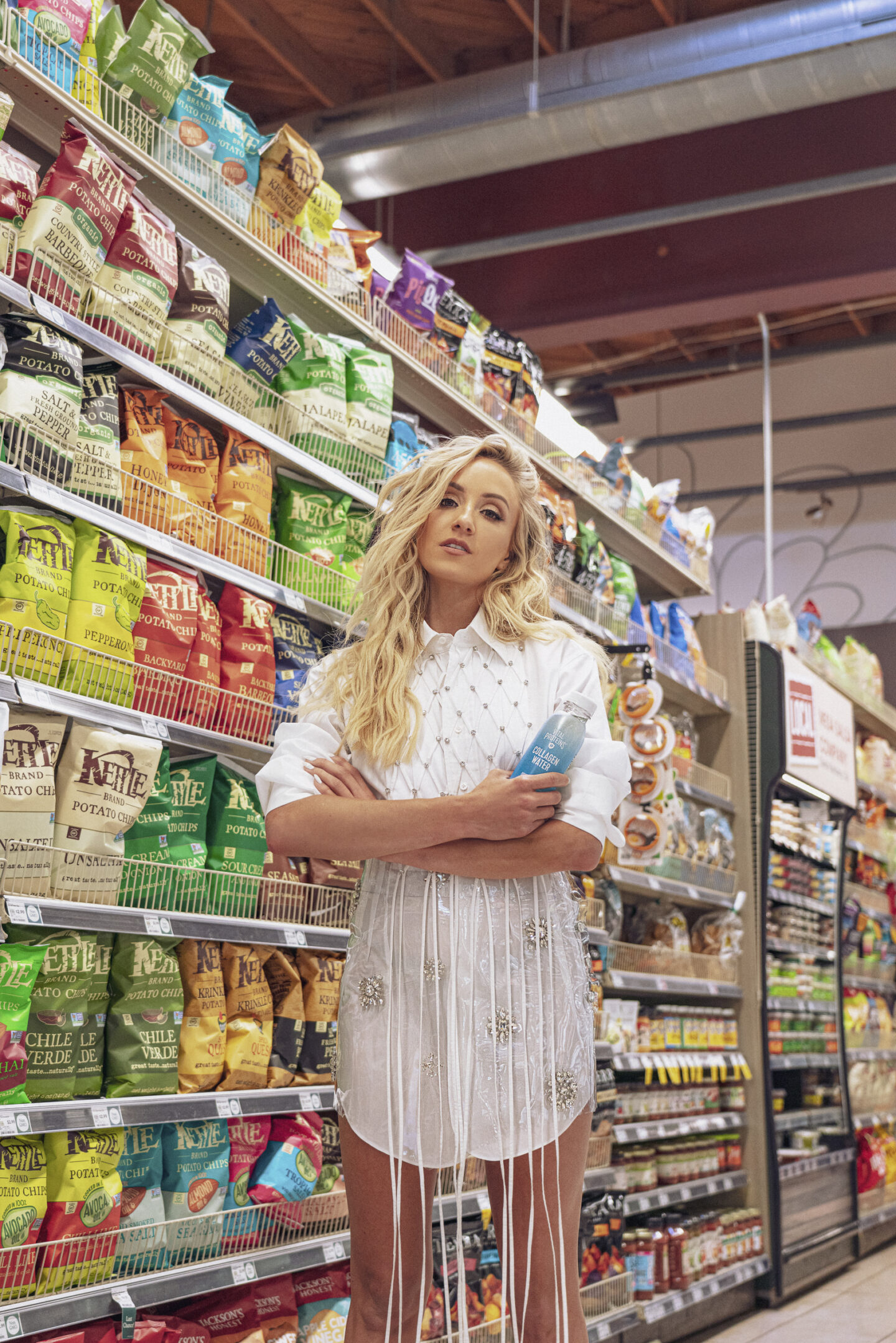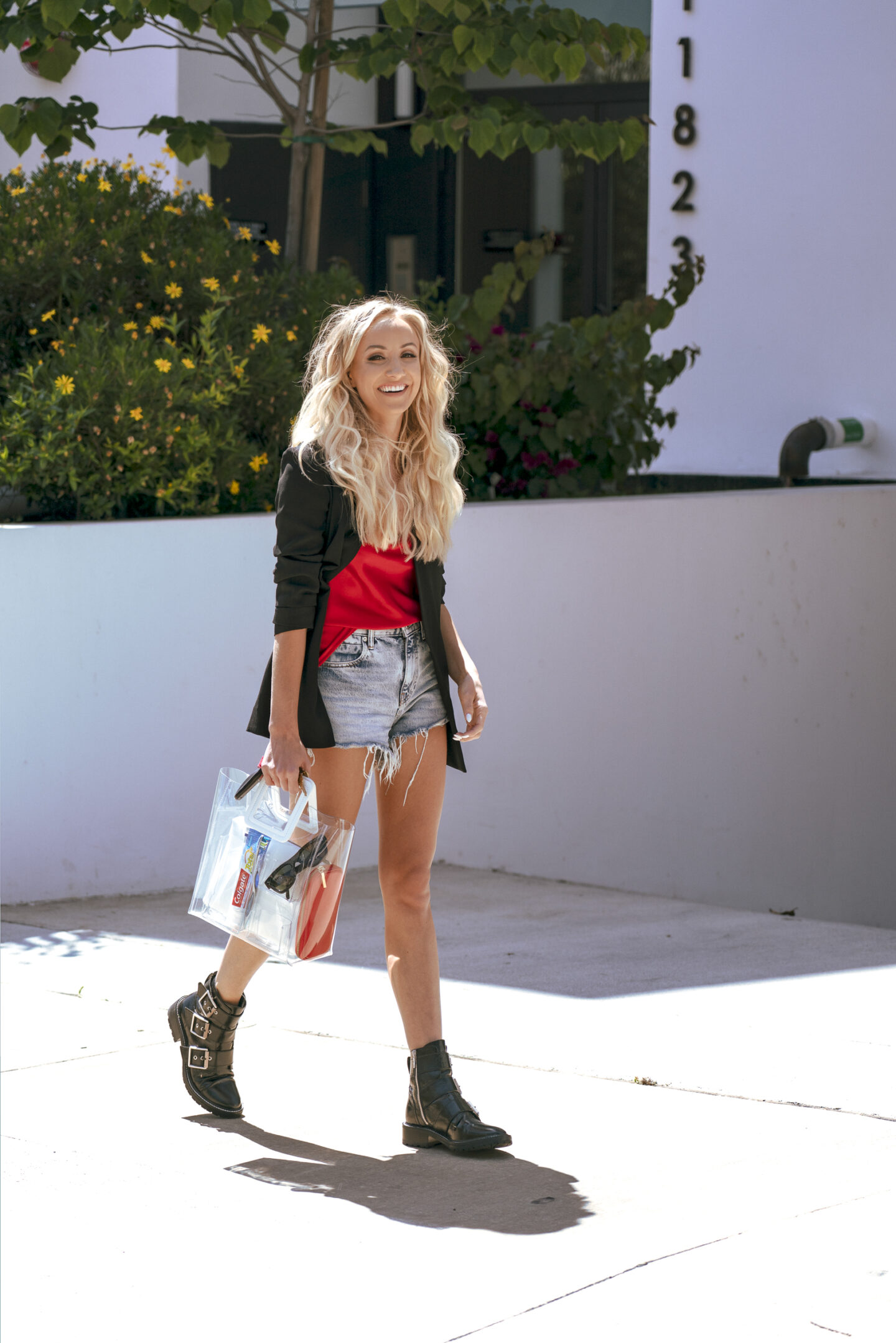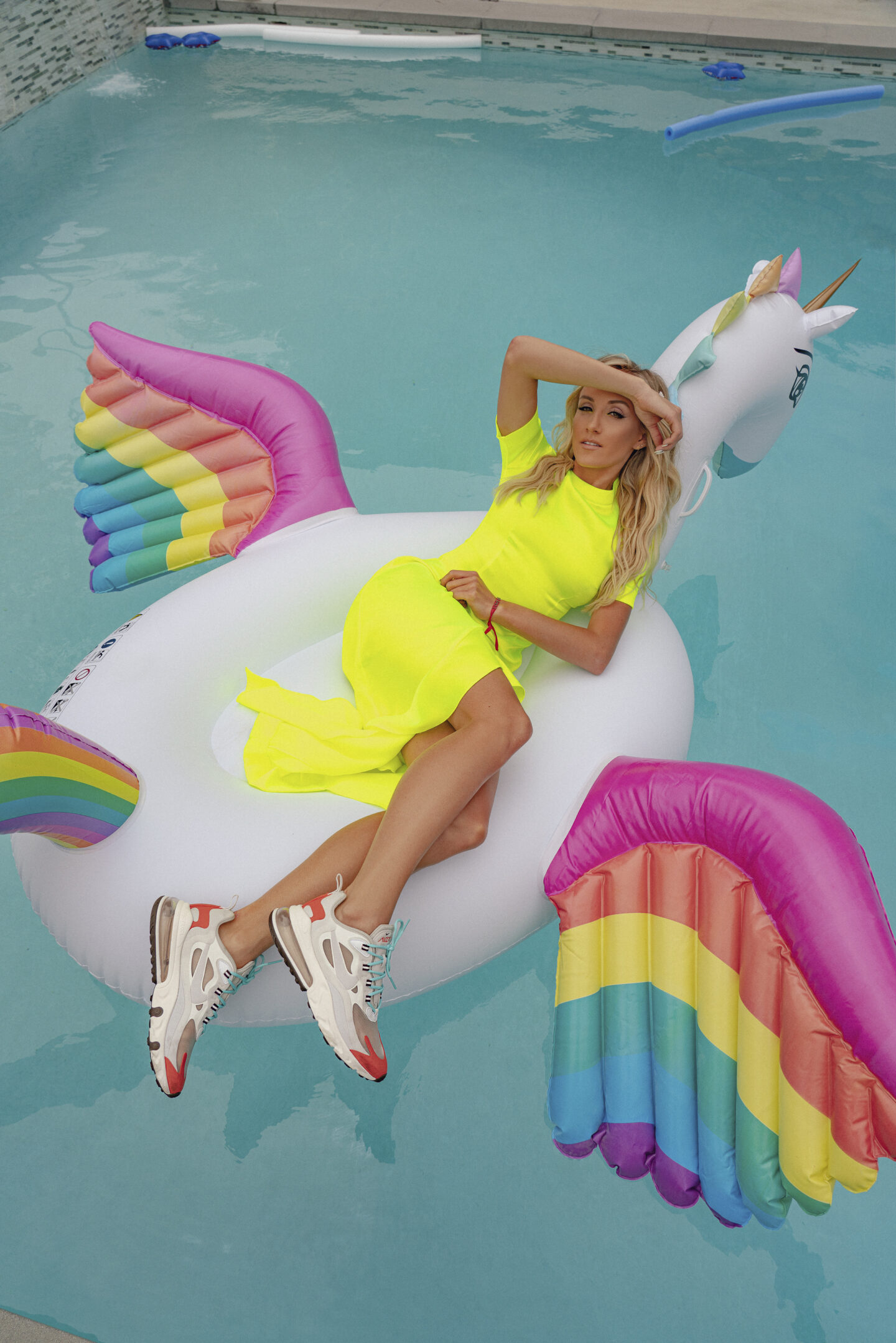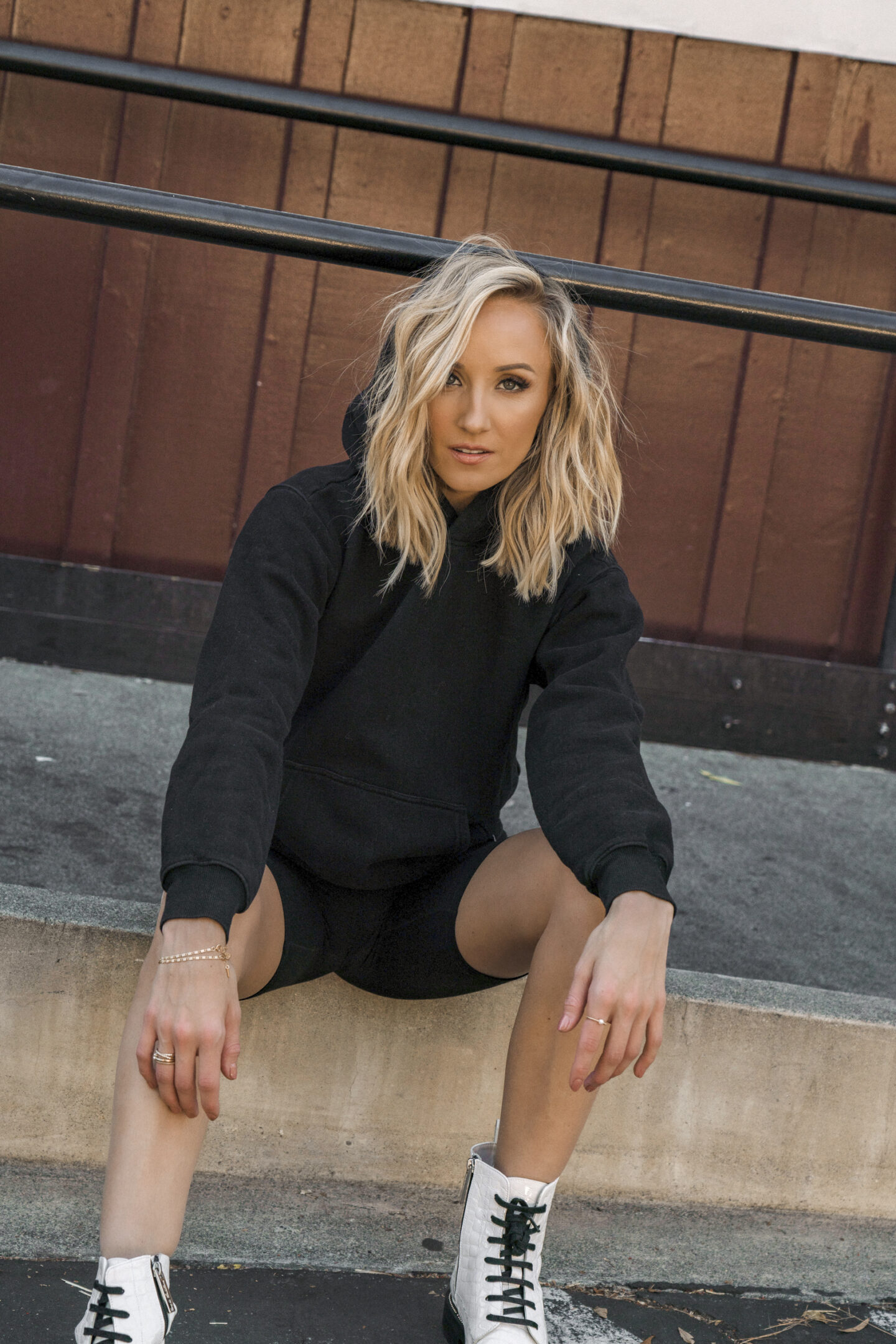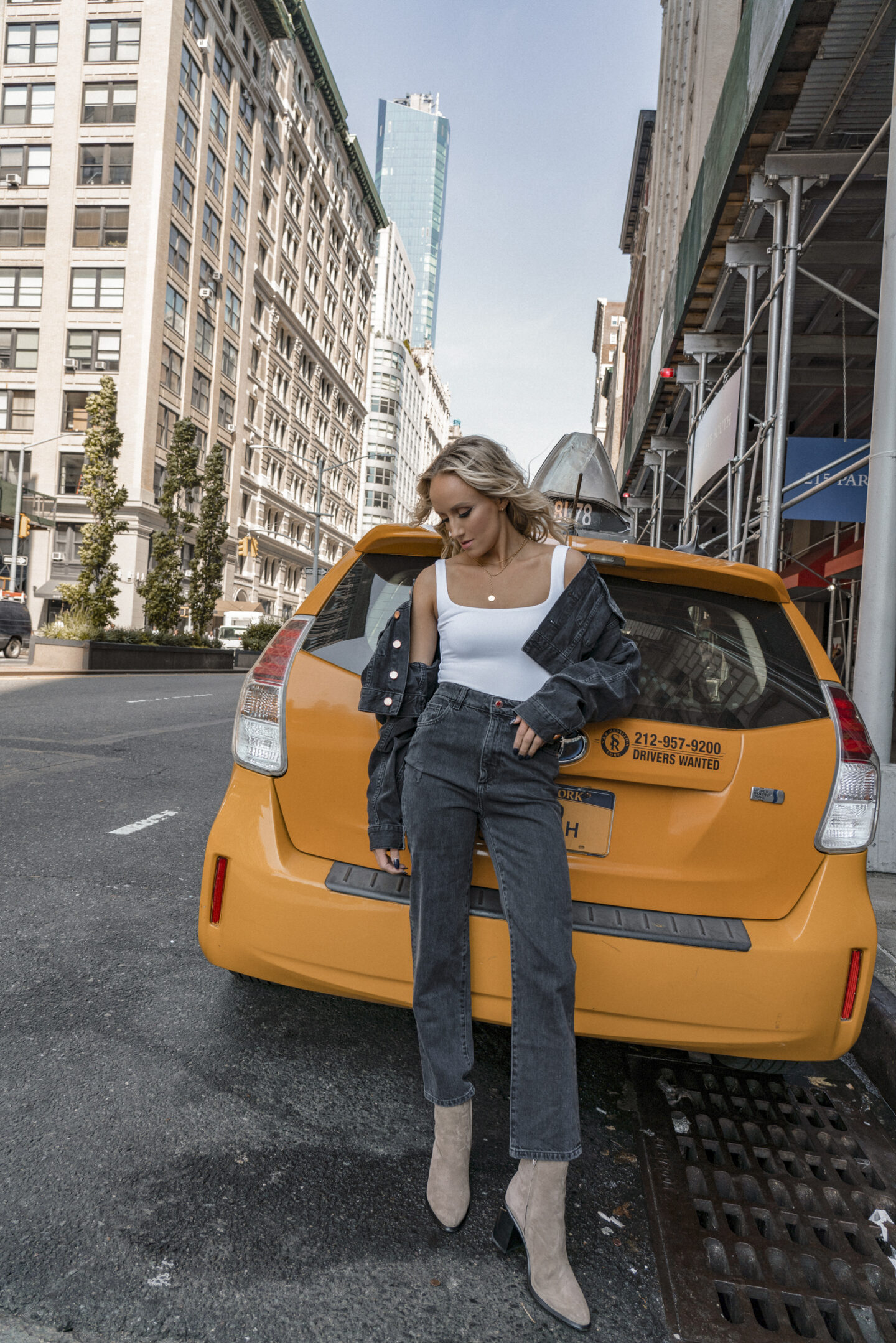Instagram is a funny thing. We see a lot of pretty photos, but we’re not seeing the reality behind what made that photo come to be. We share for so many reasons—out of insecurity, out of fear, out of pride, out of necessity, out of art—and it’s become the norm for many to put their lives on display for the whole world to see.
What some of you might not know is that Instagram makes up a large part of my job—that’s right—it’s how I make a living. With the world the way it is, this has become even more true. In-person events, competitions, speaking engagements, and the like are basically extinct (for the time being). So, I spend my time cultivating and building my community on Instagram because it’s one of the only facets of my job that remains in 2021. Sharing my day, creating engaging content, and posting photos all contributes to the growth of my account, which, in turn, directly correlates to the number of brand partners interested in working with me to leverage my audience to sell their products or services.
Disclosure: nine times out of ten, I will say no to an incoming opportunity. The only way you see a sponsored post on my Instagram is if I’ve tried and LOVED the product and/or service I’m promoting. Period. Being selective about the brands I work with ensures that you (my audience) maintain your trust with me.
Ultimately, I’m looking to build a community of individuals who support and respect one another—a community where you can come to learn, be entertained, or just find a friend (even if that friend is online). With that said, this is my job. And you all make it possible for me to do what I do every day. Just like the patrons of a small bodega make it possible for that store to remain open and sell the products it wants to sell. I think that sometimes gets lost in translation, but I want to be open about that. I’m able to make a living by providing advertising real estate to brands based off of the years I’ve spent growing my audience and creating meaningful, engaging content.
So, what exactly goes into a sponsored post these days? What is it like to be behind the scenes of an influencer’s business? What comes before “getting the shot?” Let’s dive into all of that right now.
I’m fortunate enough to be represented by an agency who helps me manage all of my brand deals. With that said, MOST influencers do everything I’m about to explain on their own. In addition to that, they’re also their own accountant, HR department, photo editor, video editor, copywriter, and so much more. My agency helps me execute my partnerships, in addition to my in-house Head of Content (she takes my photos, designs any graphic assets I might need, and many more things) and other independent contractors (i.e., stylist, videographer, hair and makeup artists, etc.). All of the aforementioned people (and expenses) are costs that are born directly by me—even though they are all needed to make a campaign come to life (there’s also the props, potential venue rental, and other miscellaneous expenses per campaign).
Let’s break it down into steps:
1. Brand reaches out about a potential collaboration.
If the brand reaches out to me directly, I’ll do a quick vet of the brand to make sure that I’m aligned with their product, mission, values, and general aesthetic. If I’m OK with what I’ve found, I’ll loop my manager into the opportunity. If the brand reaches out to my manager or my manager pitches a brand and they show interest, she’ll brief me on the opportunity, and I’ll conduct my vetting then.
2. Product or service testing phase.
We always negotiate into our agreements (if I haven’t already used the product or service already) time for me to test out the brand. Sometimes, if it’s a quick-turn campaign, I’ll lose out on the deal because I don’t have enough time to test before they want the campaign to go live. Of course that stinks, but I’d rather ensure I’m genuinely confident about my recommendation to my audience than rushing to get a campaign live that I didn’t get a chance to fully vet.
3. Contract negotiations.
While I’m in the product testing phase, my management team is conducting negotiations on my behalf with the brand or agency that is running the campaign. Some of the most important elements of a contract in the influencer space are ownership and usage of content, usage of my name and likeness, exclusivity against working with other brands, and, of course, the commercials (i.e., what the brand is willing to pay in exchange for my services). This process can take anywhere from a day (i.e., a short, 1 IG Story campaign) to a year (i.e., a multi-year licensing agreement that transcends social media and crosses into other mediums such as print, broadcast, etc.).
4. Creative briefing phase.
Once the agreement is signed, I often like to get on a call with the brand or agency that’s running the campaign to walk through the creative brief. There’s nothing worse than renting a venue, hiring hair and makeup, asking my stylist to pull pieces, and spending a whole day shooting content only for the client to ask for a reshoot because (1) they didn’t communicate what they wanted clearly or (2) we misread the brief in some way. Fortunately, we protect against this in our contracts by only agreeing to a reshoot if we are in direct violation of the creative brief, which is an exhibit to the agreement. Having a creative briefing call with the client is one extra step to ensure we’re all on the same page about the content that is going to be created.
5. Internal creative briefing.
After my team and I have had a chance to connect with the brand, now it’s our turn to brainstorm ways in which we can make the campaign successful. Of course, our ultimate goal is to sell a product or service, but we must do so in a creative, engaging, informative way. Otherwise, the campaign will flop and the client won’t be happy (which ruins any chances of a rehire—and if you’re like me, long-term partnerships are what you strive for, versus one-off #ads). In these brainstorming meetings, we’re not only planning the best messaging to convey my love for the brand, but also planning outfits, locations, props needed, and more. We like to get everything completely ironed out before an actual shoot date so that the day itself goes smoothly and we’re not scrambling. We’ll write out our shot lists and any scripts and/or talking points needed if talking to the camera is involved. This phase is usually one to three meetings with my team, plus a number of informal conversations over Slack and text if any new ideas or concerns arise. We’ll put calendar invites on our calendar for all important dates (i.e., content submission, subsequent briefing calls, shoot days, and go-live dates) and we’re on to content creation!
6. Content creation phase.
I’ve alluded to a few steps above that pertain to the content creation phase, but this is where we actually shoot the photo and video content that make up the campaign. Depending on the assets needed, this can take anywhere from one hour to multiple days’ work. Sometimes, I just don’t love how the shots came out for one reason or another (or a concept we’ve ideated in the abstract just flops in real life), and we do it all over again the next day to get it right. After the content is shot, we edit the photos and videos and put them into a Dropbox folder with labels so it’s easy for the client to look through the materials. At this point, I’ll also come up with a caption/any copy needed to go along with the assets (i.e., an Instagram caption, IG Story captions, answers to questions the brand might have if there is a press component, etc.).
7. Content submission phase.
As previously mentioned, we package the content we created into an easily navigated Dropbox (all assets) and Google Doc (all copy) to submit to the client. We like to give extra photos and, at times, alternate captions to speed up the review process and anticipate any asks that the client might have (i.e., “Do you have another shot where the bottle is more in focus?”). We usually have recommendations as to which assets we like best and what we think will perform best with my audience. At times, the client takes this advice, but, at times, they do not. Ultimately, they are my client, and if you know anything about customer service, the customer is always right. So while I know that a certain piece of content may do worse on my feed because it’s slightly more branded than the others and I’ll voice those concerns, if the client is adamant on their selection, we go with that. My management team will go back and forth with the brand until they are completely satisfied with the content, and, pending no reshoot is necessary, we move on to the next step.
8. Go-live phase.
Once content is approved, it’s time to go live on the mutually scheduled date. This date might align with a new product release, with other influencers’ posts, or it might just be a part of an evergreen awareness campaign. Sometimes, the timing is very specific (i.e., because of a press embargo or a product being put on a website at a specific time) and we need to ensure we’re aligned with this. I upload all content into the platforms in which it is going live (i.e., Instagram, Facebook, Twitter, TikTok, or my blog) and press publish. Phew. It’s definitely a sigh of relief once we’re published, especially if it was a long negotiation and content creation process. Note: this is all assuming that the campaign I’m working on has ONE pulse. Oftentimes, I’m working on evergreen campaigns that have multiple pulses throughout the year, so once step 8 is finished, we go back to steps 4-8 for each subsequent content pulse. At this time, I also like to make sure I’m engaging with my audience about the product or service—answering any questions they might have, and directing them to the appropriate brand contact if necessary. For example: many people think that I’m the customer service team for these brands (which makes sense, in a way, and I understand why they come to me) and will reach out and say things like, “I just placed an order using your code but I put in the wrong address! Can you help me fix that?” If I can connect with the brand to assist them and make the customer service process more smooth, I will. Otherwise, I’ll provide them with the right brand contact to reach out to. In a few days, the post will age, and these inquiries and comments get more manageable, but in the first few hours after go-live, I’m pretty much on-call as a brand representative, and I like to provide added value to brands in this way.
9. Wrap-up report phase.
Once a post has aged, the client wants to know how it performed. So, my team and I will supply them with the appropriate analytics that can only be seen from my end. Some clients also like to have a wrap-up call to talk about how the campaign went and what we might do differently if it’s a long-term campaign with multiple pulses. I also like to give the brand an opportunity to give me feedback. I’m constantly trying to improve my service as a business, and garnering insights from the client is the best way to do that.
10. Pitching phase.
Once a campaign has fully wrapped up, I’ll debrief with my team. If we loved working on it, my management agency will pitch the brand again to see if there are other opportunities to work together. If so, the whole process starts again!
And, that’s it! These are the ten steps that go into creating a sponsored post—at least for me! My influencer business is something I take very seriously, so I run it as such. I like to stay incredibly organized and on top of my sh*t because making it a smooth process for the brand or agency you’re working with is the number one way to get rehired. That and just being a NICE person! I always try to be amenable to a brand’s requests (unless they are so outrageous), because no one wants to work with a diva. Humility is the name of the game, people.
I hope this was helpful to anyone out there who was curious about my influencer business or who is an influencer themselves and needs more structure around their campaigns. Let me know what else you’d like me to write about in terms of behind-the-scenes influencer business. I’m always happy to share because there is MORE than enough work for everyone!
